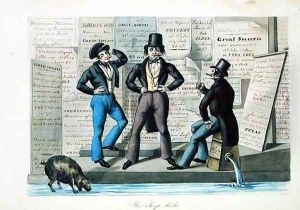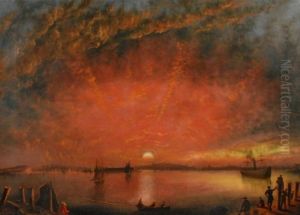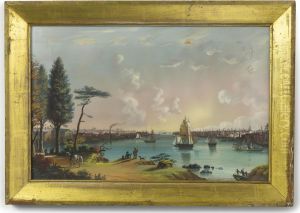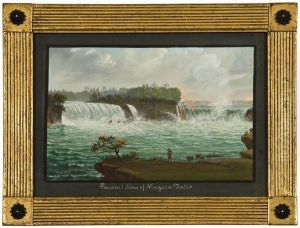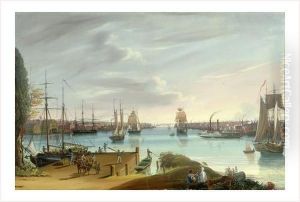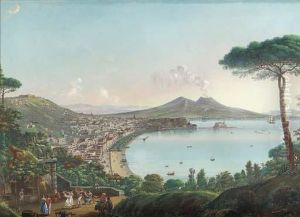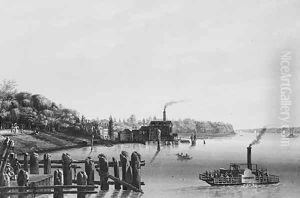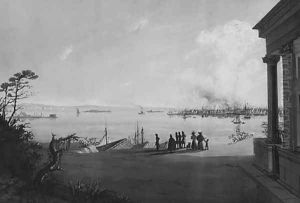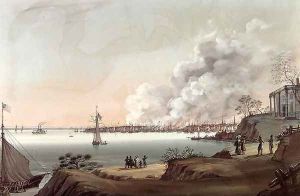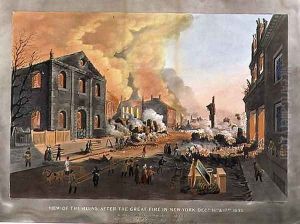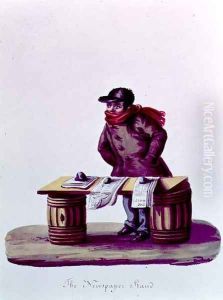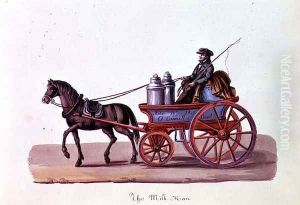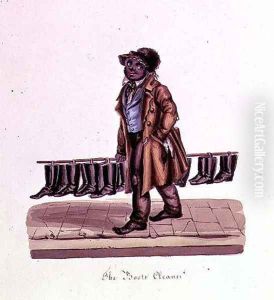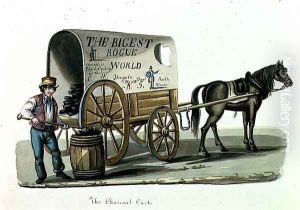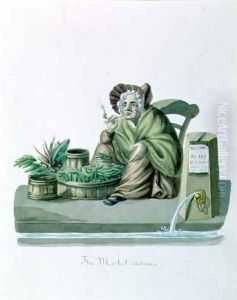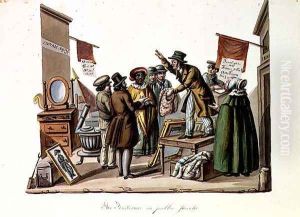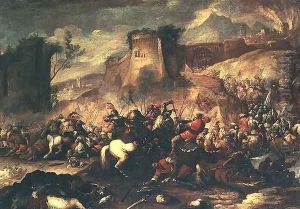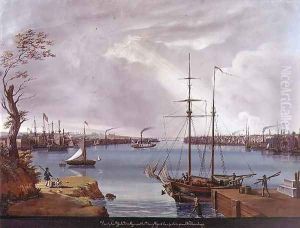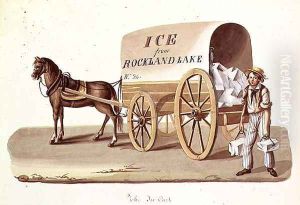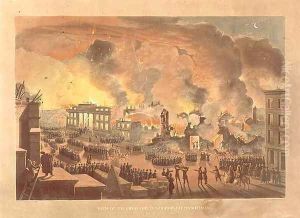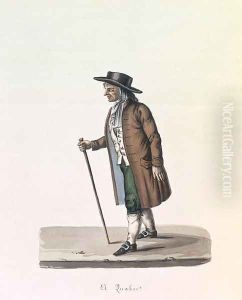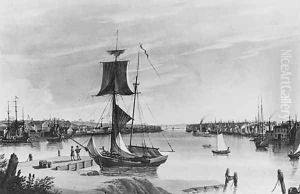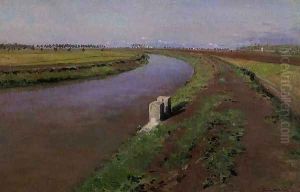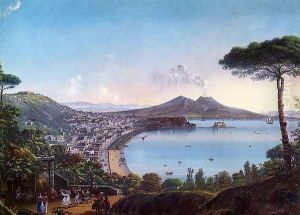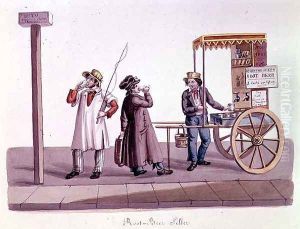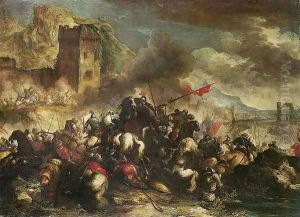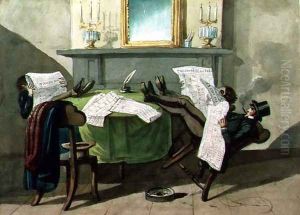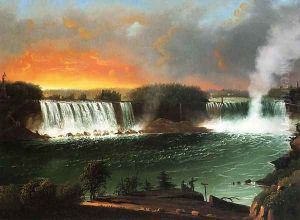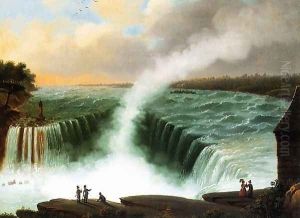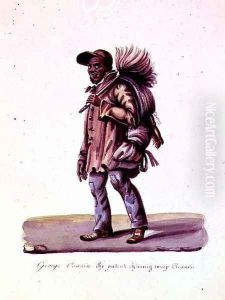Nicolino Calyo Paintings
Nicolino Calyo was an Italian-American artist known for his landscape and cityscape watercolors, particularly his depictions of early 19th-century American scenes. Born in 1799 in Naples, Italy, Calyo exhibited artistic talent from a young age. He studied at the Royal Academy in Naples, where he honed his skills in painting and drawing.
Calyo's early work in Italy was influenced by the Neoclassical style, which was prevalent during that period. However, his style evolved as he began to travel. He left Italy in the 1820s, possibly due to political unrest, and traveled throughout Europe, including stops in Greece and Russia, where he created works that captured the local scenery and culture.
In 1835, Calyo moved to the United States, settling in New York City, which at the time was rapidly growing and changing. His arrival coincided with an increasing demand for views of the city, and he quickly became known for his detailed and accurate representations of New York. Calyo's watercolors from this period provide a valuable historical record of the city's architecture and urban life. His works often depicted public events, street scenes, and the bustling harbor.
Calyo's American period was his most productive. He created numerous watercolors and prints that were sought after by collectors and the general public alike. During the 1830s and 1840s, he was particularly focused on capturing the changing face of New York City, but he also traveled and painted other American cities and landscapes.
Despite his success, little is known about Calyo's personal life during his time in America. He is believed to have taught art and continued to paint until late in his life. Nicolino Calyo died in 1884, leaving behind a legacy of work that continues to be appreciated for its historical value and artistic merit. His paintings are held in various institutions, including the Metropolitan Museum of Art and the New-York Historical Society, serving as a window into America's past and a testament to the skill of this itinerant artist.
